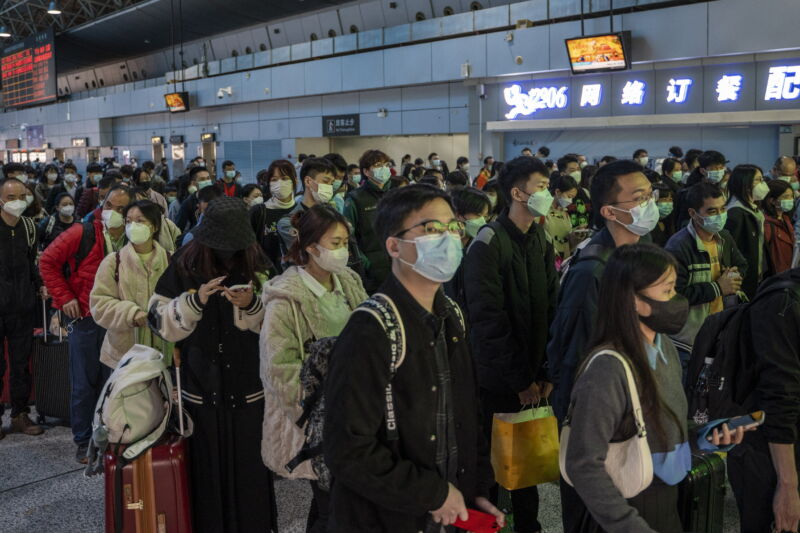
China is now reporting that nearly 60,000 people have died of COVID-19 since early December when the country abruptly abandoned its zero-COVID policy and omicron subvariants began ripping through its population. The new death toll is a stark revision from China's previously reported figure for that period, which was just 37. But experts remain skeptical that the new, much larger tally is a complete accounting, and the World Health Organization continues to press the country to release more data.
In a Saturday press conference in Beijing, the medical administration director of China's National Health Commission (NHC), Jiao Yahui, told reporters that the country recorded 59,938 COVID-related deaths between December 8 and January 12. Of those, 5,503 deaths were specifically linked to respiratory failure, and 54,435 were associated with underlying conditions, such as cancer and cardiovascular disease.
The new figures double the country's tally of COVID-19 deaths due specifically to COVID-19 respiratory failure, bringing the pandemic total to 10,775. Previously, those deaths—the ones due to COVID-19 respiratory failure or pneumonia—were the only deaths that China counted as caused by COVID-19, which drew criticism from WHO officials, who called the classification "too narrow."
Amid Saturday's data release, WHO released a statement saying that its director-general, Dr. Tedros Adhanom Ghebreyesus, had a meeting with NHC Director Ma Xiaowei, getting the new information directly. WHO said it appreciated the communication and welcomed the new data but pressed for more.
"WHO is analyzing this information, which covers early December 2022 to [January 12, 2023], and allows for a better understanding of the epidemiological situation and the impact of this wave in China," the agency wrote. It added that the data seems to suggest that cases may be on the decline overall and that the peak looked much like the towering omicron waves seen elsewhere, such as the one in the US last January.
But WHO noted data gaps, saying it has "requested a more detailed breakdown of data by province over time." The agency also noted that it again pressed China for more genetic sequencing data to monitor the emergence of new variants.
In comments to The Washington Post on Monday, Maria Van Kerkhove, WHO’s technical lead on COVID-19, said the new death figure is sad but clearly not the whole picture. She noted that it appears only to include deaths in hospitals, not any that happened elsewhere, such as in homes. "It’s really sad to see the number of hospital-related deaths of 60,000 in the last month, but that should be considered the minimum."
While a jump from 37 to nearly 60,000 reported deaths since early December is startling, the latest figure is still significantly lower than modeled estimates, which put China's death toll in the current wave well into the hundreds of thousands. Numerous models have forecast that the country will see over 1 million deaths by the wave's end in the coming weeks.
Still, Van Kerkhove noted to the Post that the revelations over the weekend offered one important confirmation regarding WHO's recent push to get more data from China: "It tells us that this data exists."
reader comments
96